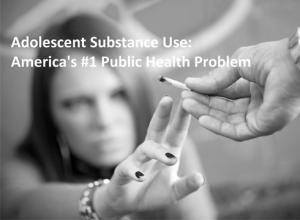Earlier substance abuse more likely to lead to addiction

Overview
Originally Published: 07/01/2011
Post Date: 07/01/2011
by Shari Roan - Los Angeles Times.
Attachment Files
Summary/Abstract
Addictions are largely problems of people who begin smoking, drinking or using other drugs before age 21, according to a report published Wednesday by the National Center on Addiction and Substance Abuse at Columbia University.
Content
LOS ANGELES -- Addictions are largely problems of people who begin smoking, drinking or using other drugs before age 21, according to a report published Wednesday by the National Center on Addiction and Substance Abuse at Columbia University. The report calls adolescent substance use America's leading public health problem and points to statistics that show an "epidemic" of use among minors. For example, 75 percent of all high school students have used addictive substances. Substances act differently on the developing brain. The report notes that one in four Americans who began using any addictive substance before age 18 are addicted, compared with one in 25 Americans who started using at age 21 or older. However, 46 percent of children live in a household where an adult is smoking, drinking excessively, misusing prescription drugs or using illegal drugs, the report concluded. Moreover, many adults fail to see the harm in smoking, drinking or marijuana use in people under age 21 while the current culture portrays addictive substances as glamorous or fun. Delaying the use of addictive substances for as long as possible should be a high priority of parents and pediatricians. "The combination of adolescence, an American culture that glorifies and promotes substance use, and easy access to tobacco, alcohol and other drugs creates a perfect storm for our teens and for taxpayers," said Jim Ramstad, a board member of the National Center on Addiction and Substance Abuse (CASA) who chaired the report's national advisory commission. "We no longer can justify writing off adolescent substance use as bad behavior, as a rite of passage or as kids just being kids. The science is too clear, the facts are too compelling, the health and social consequences are too devastating and the costs are simply too high," he said. Measures to reduce teen substance use include having positive adult role models, rules from parents prohibiting substance use, participation in clubs and activities, involvement in religious or spiritual practices, strong school and community attachment, early screening and intervention programs, reduction of pro-substance use advertising and media messages and targeted prevention programs for teens at high risk. Susan Foster, vice president and director of policy research and analysis for CASA, said: "We rightfully worry about other teen health problems like obesity, depression or bullying, but we turn a blind eye to a more common and deadly epidemic that we can in fact prevent." The report is titled "Adolescent Substance Use: American's No. 1 Public Health Problem."





